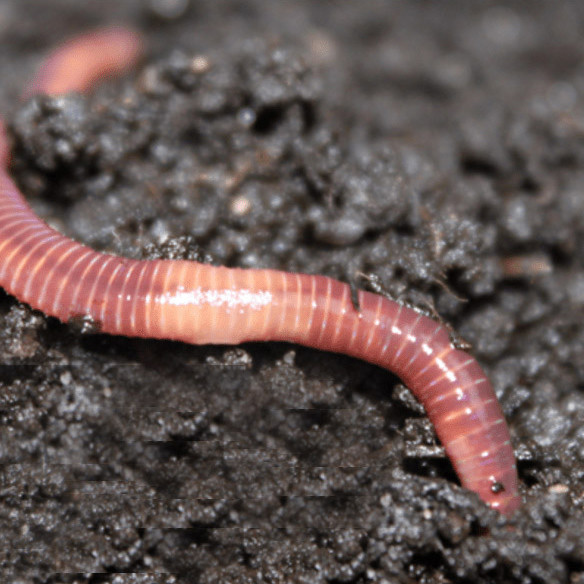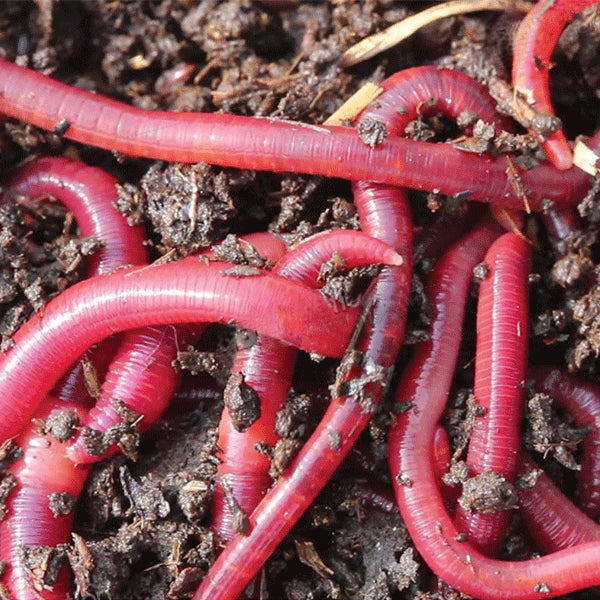Efficient red worms: Great for enriching soil
Wiki Article
Exactly How Red Wigglers Can Increase Your Organic Waste Recycling
Red wigglers represent a crucial part in enhancing natural waste recycling, efficiently converting day-to-day cooking area scraps and garden particles into beneficial worm castings. Recognizing the intricacies of establishing a vermicomposting system and the ideal care for these worms can dramatically enhance the advantages.
Benefits of Red Wigglers
Red wigglers, a kind of composting earthworm, offer various benefits that make them vital in natural waste recycling. Their ability to eat a variety of natural products makes them very reliable decomposers. These worms can process kitchen area scraps, garden waste, and even paper products, transforming them into nutrient-rich spreadings. This process not just lowers the volume of waste sent to land fills yet additionally enriches soil wellness.Additionally, red wigglers boost soil oygenation and drainage with their burrowing tasks, promoting a healthier origin atmosphere for plants. Their castings are abundant in helpful microbes and necessary nutrients, promoting robust plant growth and improving soil structure (red wigglers). The usage of red wigglers in composting is an environmentally friendly option to chemical plant foods, which can have hazardous side results.
Furthermore, vermicomposting with red wigglers is a low-maintenance and efficient approach of reusing natural waste, making it accessible for homes and areas alike. Their quick reproduction rate makes certain a stable supply for recurring composting initiatives, even more amplifying their advantages. Overall, red wigglers act as a critical component in sustainable waste monitoring and soil improvement methods.
Setting Up a Vermicomposting System
Creating an efficient vermicomposting system requires careful planning and factor to consider of different aspects that add to its success. The structure of a successful system starts with selecting a suitable bin. Options vary from business bins to homemade alternatives, but it is critical that the container is well-ventilated and properly sized to fit the number of red wigglers.Following, the selection of bedding product is important. Ideal bedding includes shredded newspaper, cardboard, or coconut coir, which provides both an environment and a resource of carbon for the worms. The bedding should be moistened yet not extremely damp to avoid anaerobic problems.
Preserving the ideal setting is vital. Red wigglers grow in temperatures between 55 ° F and 77 ° F(13 ° C to 25 ° C )and require a pH level around neutral. Keeping track of wetness levels is also crucial, as excessive wetness can result in smell problems, while inadequate can dry out the worms.
Lastly, positioning the vermicomposting system in a shaded location secured from direct sunshine will certainly help maintain a secure environment. With these factors to consider in mind, one can successfully set up a growing vermicomposting system that enhances organic waste recycling.
What to Feed Red Wigglers
Feeding red wigglers the ideal materials is fundamental to keeping a healthy vermicomposting system. These worms grow on a varied diet regimen mostly made up of raw material, that includes fruit and veggie scraps, coffee grounds, smashed eggshells, and shredded paper. It is vital to avoid feeding them meat, dairy products, oily foods, or any processed things, as these can create odors, draw in bugs, and lead to an undesirable setting.A well balanced see page diet plan for red wigglers advertises optimum digestion and nutrient manufacturing. Goal for a mix of environment-friendly materials, high in nitrogen, such as veggie peels and lawn clippings, and brown products, abundant in carbon, like dried leaves and cardboard. This balance makes sure a lasting food source while preserving wetness degrees in the worm bin.
In addition, it is recommended to chop or shred bigger scraps to accelerate disintegration and make the food extra accessible to the worms. Regularly checking the usage rate will certainly assist establish the proper quantity to feed, protecting against overfeeding and keeping a growing ecological community. By offering an ideal diet plan, you not only sustain the wellness of red wigglers yet additionally boost the efficiency of your vermicomposting initiatives.
Maintaining Your Worm Bin
To ensure the health and wellness and performance of your vermicomposting system, maintaining your worm container is crucial. If it comes to be too damp, excess moisture can lead to anaerobic conditions, harming your worms.Temperature is an additional essential factor. Preferably, the worm bin ought to be kept between 55 ° F and 77 ° F(13 ° C to 25 ° C) Extreme temperature levels can worry or kill your worms. To achieve this, place your bin in a climate-controlled environment away from straight sunlight or heat resources.
Aeration is vital for oxygen flow. Delicately turning the bed linens with a garden fork every few weeks will assist aerate the material and avoid compaction. In addition, be attentive regarding the container's odor. A nasty smell may indicate overfeeding or an imbalance in the carbon-to-nitrogen proportion. If this occurs, lower feeding and include more carbon-rich products like shredded paper or cardboard.
(red wiggler compost bin)
Using Worm Spreadings in Gardening

Including worm castings right into yard soil improves its framework, oygenation, and dampness retention, producing an optimum atmosphere for root growth. The high nutrient material of worm spreadings, including nitrogen, phosphorus, and potassium, contributes to vigorous plant development and boosted yields. In addition, worm castings include crucial trace element and enzymes that advertise the total health of plants, enabling them to much better hold up against pests and conditions.
Worm spreadings can be used directly to the soil or combined into potting mixes for container horticulture. A thin layer spread over yard beds or contributed to compost stacks can additionally enhance the microbial task and nutrient account of the compost. As a sustainable and environmentally friendly fertilizer option, worm castings support organic gardening methods while reducing reliance on synthetic fertilizers, thereby promoting a healthier environment.
Verdict
Finally, the assimilation of red wigglers into natural waste reusing techniques presents a viable option for improving soil health and wellness and promoting sustainable horticulture strategies. By successfully disintegrating kitchen scraps and garden waste, red wigglers contribute to nutrient-rich worm castings that boost dirt oygenation and wetness retention. This environment-friendly approach not only lowers land fill payments yet also reduces the dependence on chemical plant foods, inevitably fostering much healthier communities and liable waste monitoring techniques.Report this wiki page